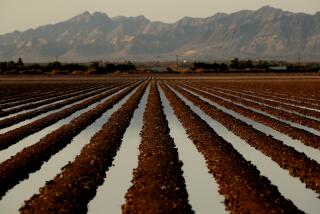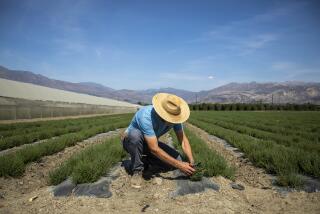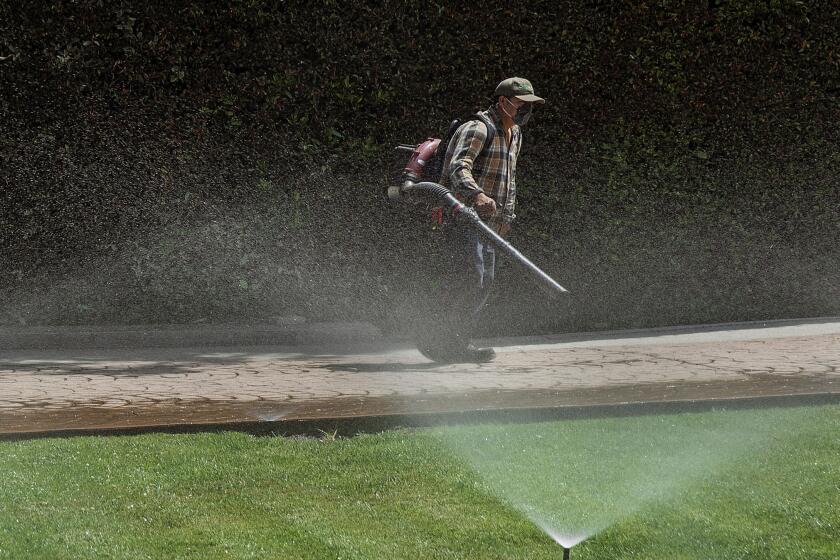Erosion Control Changes Farmers’ Ways
- Share via
WASHINGTON — Walk through a green field in farm country and, once the grasshoppers have scurried off, the eye turns to cobs and stalks of corn lying underneath.
That stubble holds down dirt. What might have been viewed as trash a few decades ago is becoming commonplace in fields as growers change their practices to save topsoil.
Required since 1985 to take steps against erosion of the most fragile soil, growers have been forgoing the plow and taking other steps, such as building terraces and making grassy field borders. A newly released update from the Soil Conservation Service says progress has been immense.
“Over 200 years of farming tradition has changed in just 10 short years,” the agency’s chief, Paul W. Johnson, told a House Agriculture subcommittee this month.
The Agriculture Department had already determined that, of the nation’s 400 million acres of cropland, 145 million acres are highly erodible, meaning it doesn’t take much wind or rain to deplete the fertile part and send it clogging waterways or polluting the air.
The 1985 farm bill said farmers had to take protective measures to keep getting price supports, crop insurance, disaster aid and other benefits.
The law required growers to have a conservation system at work by Dec. 31, 1994. Congress is beginning to look at conservation programs as it studies what should be in the 1995 farm bill.
By the end of 1993, 1.7 million conservation plans had been developed, Johnson said.
Farmers can save time, labor, fuel, water and equipment with many of the techniques, advocates say.
But there are drawbacks, farmers say. Spores that carry wheat scab stay in the residue that would have been cleared by plowing, creating a serious crop problem in Minnesota, North Dakota and South Dakota, said Ross Hansen, vice president of the National Assn. of Wheat Growers.
The residue also allows the Hessian fly to live through the winter in the Pacific Northwest, he said. Some weeds--such as cheat, rye and jointed goatgrass--also pop up more readily, requiring more use of herbicides, which become less effective as the weeds develop resistance.
“There is a great need to allow flexibility in modifying practices as necessary to protect crops from disease and other pest problems,” Hansen said.
The Environmental Working Group, which specializes in environmental problems caused by agriculture, has challenged the Agriculture Department’s rosy assessment.
Kenneth A. Cook, president of the group, said the report provides too little information and comes too close to the Dec. 31 deadline.
The group’s own field research and examination of government data, along with internal checks by the Office of Inspector General and others, has found widespread problems, he said.
Compliance is uneven at best, and violations are underreported.
Still, he said, “the weight of available evidence points to very significant erosion-control accomplishments on the parts of hundreds of thousands of farmers as a result of the conservation compliance policy.”
If the government estimates hold true, the conservation practices will save 1 billion tons of soil each year. How much is that? This is how Johnson put it:
“This is enough topsoil to grow 800 billion rosebushes using 3-pound pots. If these pots were planted at the density of one pot per square yard, roses would cover a combined area the size of Rhode Island, Virginia, New York, Arkansas, Oregon and Washington.”
More to Read
Sign up for Essential California
The most important California stories and recommendations in your inbox every morning.
You may occasionally receive promotional content from the Los Angeles Times.














